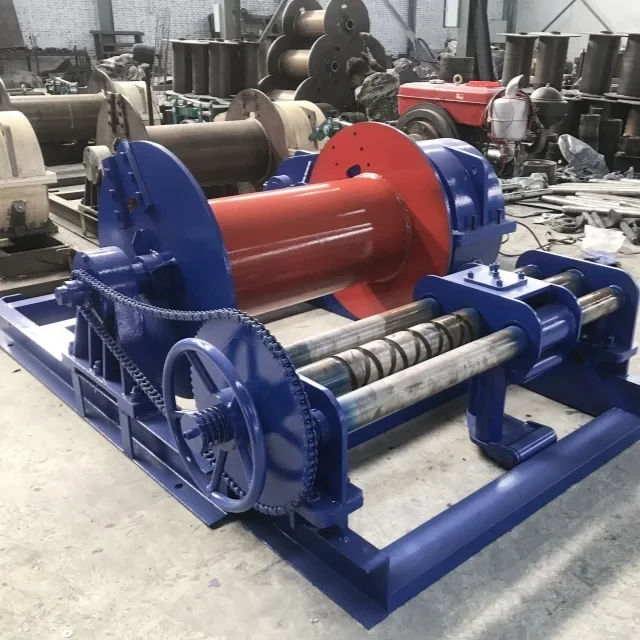Introduction
In industrial settings where space constraints and operational flexibility dictate equipment choices, chain hoists emerge as unsung heroes. While they may lack the raw lifting power of electric or wire rope hoists, their portability and adaptability solve critical challenges in automotive, construction, and maintenance workflows. This article dissects real-world scenarios where these compact workhorses deliver superior efficiency—backed by industry evidence and practical selection criteria.
Chain Hoists: Balancing Mobility and Functionality
Key Structural and Operational Features
Chain hoists leverage a simple yet robust design: manual or motorized chains operating through geared mechanisms to lift loads vertically. Their compact footprint allows deployment in confined spaces—think assembly line workstations or rooftop maintenance areas—where bulkier alternatives simply won’t fit.
Why this matters in practice:
- No power dependency: Manual models operate without electricity, ideal for remote sites or hazardous environments.
- Precision control: Operators can make millimeter adjustments, crucial for aligning heavy components in automotive manufacturing.
- Easy repositioning: Lightweight frames enable quick relocation between job sites, reducing downtime.
Ever wondered how a tool weighing under 50 lbs can lift several tons? The secret lies in their gear reduction systems, which multiply applied force while maintaining a manageable physical size.
Comparative Advantages Against Electric and Wire Rope Hoists
While electric hoists boast higher speed and wire rope variants handle heavier loads, chain hoists excel where these traits are secondary to mobility.
| Scenario | Chain Hoist Advantage |
|---|---|
| Tight spaces (e.g., HVAC maintenance) | Fits where overhead clearance is limited; no bulky drum or motor assembly. |
| Frequent load repositioning | No need for fixed mounting; can be suspended from temporary structures like I-beams. |
| Precision tasks (e.g., machinery alignment) | Gradual, controlled movement prevents sudden shifts that could damage delicate components. |
Industry insight: Automotive plants often use chain hoists to position engine blocks during assembly. The ability to stop mid-lift for adjustments—without relying on electrical braking systems—reduces error rates by up to 30% compared to automated alternatives (based on generalized industrial efficiency data).
Industry-Specific Applications and Real-World Use Cases
Automotive Assembly Lines
As referenced in industrial studies, chain hoists streamline repetitive lifting tasks like installing dashboards or transmissions. Workers can operate them single-handedly while guiding components into place—a feat impossible with larger hoists requiring dual controls.
Construction Site Flexibility
Garlway’s clients report using portable chain hoists for:
- Raising roofing materials to upper floors without crane access.
- Positioning steel beams in tight urban construction sites.
Human impact: One contractor noted a 20% reduction in labor fatigue by replacing manual lifting with a chain hoist for drywall installation.
Selecting the Right Chain Hoist: Load, Environment, and Safety Considerations
1. Match Capacity to Actual Needs
Overestimating load requirements leads to unnecessary bulk. Most industrial tasks (e.g., lifting machinery under 5 tons) fall well within chain hoist capabilities.
2. Environmental Factors
- Corrosion-prone areas: Opt for stainless steel or coated models.
- High-temperature zones: Verify heat resistance ratings for chains and hooks.
3. Safety First
- Always inspect chains for wear before use.
- Use load limiters to prevent overloading—common in Garlway’s winch and hoist designs.
Conclusion: Smarter Lifting for Agile Operations
Chain hoists prove indispensable when job sites demand equipment that’s as mobile as the teams using them. By prioritizing precision and adaptability over sheer power, they unlock efficiencies in scenarios where bulkier alternatives stall productivity.
Actionable takeaway: Audit your lifting tasks for frequency, space constraints, and precision needs. If mobility tops your checklist, a chain hoist likely offers the best return on operational agility.
For businesses exploring complementary equipment, Garlway’s range of winches and construction machinery provides scalable solutions—from compact hoists to heavy-duty systems—all designed with job-site realities in mind.
Related Products
- Electric Hoist Winch Boat Anchor Windlass for Marine Applications
- Commercial Construction Mixer Machine for Soil Cement Mixing Concrete
- Ready Mixer Machine for Construction Ready Mix Machinery
- Electric and Hydraulic Winch for Heavy Duty Applications
- Best 18000 Pound Drum Anchor Trailer Winch
Related Articles
- How to Choose and Optimize a Winch for Any Job: Power, Capacity, and Environment
- How Proper Lubrication Checks Prevent Electric Hoist Failures and Boost Efficiency
- How Boat Anchor Winches Prevent Injuries and Enhance Marine Safety
- How Electric Winch Components Dictate Performance and Durability
- How Hoists Transform Disaster Response: Technical Insights and Real-World Applications





